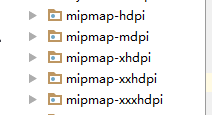編輯:關於Android編程
Loaders,中文可理解為“加載器”,在Android3.0中新增。從字面含義可見其功能,即提供數據加載。特別地,加載數據的方式為異步。它具有以下特點:
Loaders用於所有的Activity和Fragment; 提供異步數據裝載機制;監控他們的來源數據變化情況,在數據發生變化的時候傳遞新的結果;自動重連到最後一個數據加載器游標,因此不需要重新查詢數據
如何在應用中使用Loaders
使用Loaders的先決條件:
需要一個Activity 或者 Fragmnet一個LoaderManager實例一個用於加載數據的的CursorLoader對象(依賴於ContentProvider)一個LoaderManager.LoaderCallbacks的實現類.一個數據展現適配器,比如SimpleCursorAdapter一個數據源,比如ContentProvider
啟動數據加載器Loaders
LoaderManager管理者一個Activity或者Fragment中的一個或多個Loader實例,每個Activity或者Fragment只有對應一個LoaserManager。
一般在Activity的onCreate方法或者Fragment的onActivityCreated方法中初始化一個Loader:
getLoaderManager().initLoader(0, null, this);
參數:
1、 第一個參數:0 為Loader的唯一標識ID;
2、 第二個參數: 為Loader的構造器可選參數,這裡為null;
3、 第三個參數:this,這裡表示當前Activity對象或者Fragment對象,提供給LoaderManager對象進行數據匯報。
InitLoader()方法保證了Loader初始化及對象激活,執行這個方法有2個可能的結果:
1、 如果ID存在,則重復利用;
2、 如果ID不存在,則出發LoaderManager.LoaderCallbacks的onCreateLoader()方法新創建一個Loader並返回;
不管在什麼情況下,只有Loader狀態發生了變化,與之關聯的LoaderManager.LoaderCallbacks實現類都會被告知;
你可能注意到了,initLoader返回的Loader對象並未與任何變量關聯,那是因為LoaderManager有自動的Loader管理功能;LoaderManager在必要的時候自動啟動及停止數據加載操作,並且維護者Loader的狀態;這就意味著,你很少直接與Loader進行交互。一般地,使用LoaderManager.LoaderCallbacks的onCreateLoader()方法去干預數據加載的過程中的特殊事件。
如何重啟數據加載器Loaders
在上面創建Loaders時,如果ID不存在則創建,否則使用舊的Loader,但有些時候,我們需要清理掉舊的數據重新開始。
使用restartLoaser()可以做到。比如,SearchView.OnQueryTextListener的實現類,在查詢條件發生改變時重啟Loaders,以便獲取最新的查詢結果。
public boolean onQueryTextChanged(String newText) {
// Called when the action bar search text has changed. Update
// the search filter, and restart the loader to do a new query
// with this filter.
mCurFilter = !TextUtils.isEmpty(newText) ? newText : null;
getLoaderManager().restartLoader(0, null, this);
return true;
}
LoaderManager.LoaderCallbacks 接口是客戶端與LoaderManager進行交互的腰帶。
Loader ,特別是CursorLoader,期望在停止狀態後保存它們的狀態。這樣的話,用戶在交互過程中,就避免了數據的重新加載而導致UI卡死的局面。使用回調函數,就可以知道什麼時候去創建一個新的Loader,並且告知應用程序什麼時候停止使用Loader加載的數據。
回調方法有:
onCreateLoader():根據給定的ID創建新的Loader;onLoaderFinished():當Loader完成數據加載後調用;onLoaderReset():Loader重置,使之前的數據無效;
// If non-null, this is the current filter the user has provided. String mCurFilter; ... public LoaderonCreateLoader(int id, Bundle args) { // This is called when a new Loader needs to be created. This // sample only has one Loader, so we don't care about the ID. // First, pick the base URI to use depending on whether we are // currently filtering. Uri baseUri; if (mCurFilter != null) { baseUri = Uri.withAppendedPath(Contacts.CONTENT_FILTER_URI, Uri.encode(mCurFilter)); } else { baseUri = Contacts.CONTENT_URI; } // Now create and return a CursorLoader that will take care of // creating a Cursor for the data being displayed. String select = (( + Contacts.DISPLAY_NAME + NOTNULL) AND ( + Contacts.HAS_PHONE_NUMBER + =1) AND ( + Contacts.DISPLAY_NAME + != '' )); return new CursorLoader(getActivity(), baseUri, CONTACTS_SUMMARY_PROJECTION, select, null, Contacts.DISPLAY_NAME + COLLATE LOCALIZED ASC); }
完整的實例
public static class CursorLoaderListFragment extends ListFragment
implements OnQueryTextListener, LoaderManager.LoaderCallbacks {
// This is the Adapter being used to display the list's data.
SimpleCursorAdapter mAdapter;
// If non-null, this is the current filter the user has provided.
String mCurFilter;
@Override public void onActivityCreated(Bundle savedInstanceState) {
super.onActivityCreated(savedInstanceState);
// Give some text to display if there is no data. In a real
// application this would come from a resource.
setEmptyText(No phone numbers);
// We have a menu item to show in action bar.
setHasOptionsMenu(true);
// Create an empty adapter we will use to display the loaded data.
mAdapter = new SimpleCursorAdapter(getActivity(),
android.R.layout.simple_list_item_2, null,
new String[] { Contacts.DISPLAY_NAME, Contacts.CONTACT_STATUS },
new int[] { android.R.id.text1, android.R.id.text2 }, 0);
setListAdapter(mAdapter);
// Prepare the loader. Either re-connect with an existing one,
// or start a new one.
getLoaderManager().initLoader(0, null, this);
}
@Override public void onCreateOptionsMenu(Menu menu, MenuInflater inflater) {
// Place an action bar item for searching.
MenuItem item = menu.add(Search);
item.setIcon(android.R.drawable.ic_menu_search);
item.setShowAsAction(MenuItem.SHOW_AS_ACTION_IF_ROOM);
SearchView sv = new SearchView(getActivity());
sv.setOnQueryTextListener(this);
item.setActionView(sv);
}
public boolean onQueryTextChange(String newText) {
// Called when the action bar search text has changed. Update
// the search filter, and restart the loader to do a new query
// with this filter.
mCurFilter = !TextUtils.isEmpty(newText) ? newText : null;
getLoaderManager().restartLoader(0, null, this);
return true;
}
@Override public boolean onQueryTextSubmit(String query) {
// Don't care about this.
return true;
}
@Override public void onListItemClick(ListView l, View v, int position, long id) {
// Insert desired behavior here.
Log.i(FragmentComplexList, Item clicked: + id);
}
// These are the Contacts rows that we will retrieve.
static final String[] CONTACTS_SUMMARY_PROJECTION = new String[] {
Contacts._ID,
Contacts.DISPLAY_NAME,
Contacts.CONTACT_STATUS,
Contacts.CONTACT_PRESENCE,
Contacts.PHOTO_ID,
Contacts.LOOKUP_KEY,
};
public Loader onCreateLoader(int id, Bundle args) {
// This is called when a new Loader needs to be created. This
// sample only has one Loader, so we don't care about the ID.
// First, pick the base URI to use depending on whether we are
// currently filtering.
Uri baseUri;
if (mCurFilter != null) {
baseUri = Uri.withAppendedPath(Contacts.CONTENT_FILTER_URI,
Uri.encode(mCurFilter));
} else {
baseUri = Contacts.CONTENT_URI;
}
// Now create and return a CursorLoader that will take care of
// creating a Cursor for the data being displayed.
String select = (( + Contacts.DISPLAY_NAME + NOTNULL) AND (
+ Contacts.HAS_PHONE_NUMBER + =1) AND (
+ Contacts.DISPLAY_NAME + != '' ));
return new CursorLoader(getActivity(), baseUri,
CONTACTS_SUMMARY_PROJECTION, select, null,
Contacts.DISPLAY_NAME + COLLATE LOCALIZED ASC);
}
public void onLoadFinished(Loader loader, Cursor data) {
// Swap the new cursor in. (The framework will take care of closing the
// old cursor once we return.)
mAdapter.swapCursor(data);
}
public void onLoaderReset(Loader loader) {
// This is called when the last Cursor provided to onLoadFinished()
// above is about to be closed. We need to make sure we are no
// longer using it.
mAdapter.swapCursor(null);
}
}
 Android之機型適配
Android之機型適配
在軟件開發的過程中,為了讓軟件在不同的場景下都可以使用,所以機型適配是不可或缺並且非常重要耗時的一個環節。一:機型適配需要考慮的幾個方面:1,Android的版本2.手機
 自定義動畫(仿Win10加載動畫)
自定義動畫(仿Win10加載動畫)
一、源代碼源代碼及demo二、背景先看看Win10的加載動畫(找了很久才找到):每次打開電腦都會有這個加載動畫,看上挺cool的,就想著自己能否實現它。要實現這個動畫?首
 android 自定義toast width height 背景圖片
android 自定義toast width height 背景圖片
Android 自定義toast 寬高大小 背景圖片 RelativeLayout layout = (RelativeLayout) getLayoutInfl
 android_文件下載
android_文件下載
android 在網絡上下載文件步驟 : 1.使用HTTP協議下載文件- 創建一個HttpURLConnection對象 : HttpURLConnection urlC